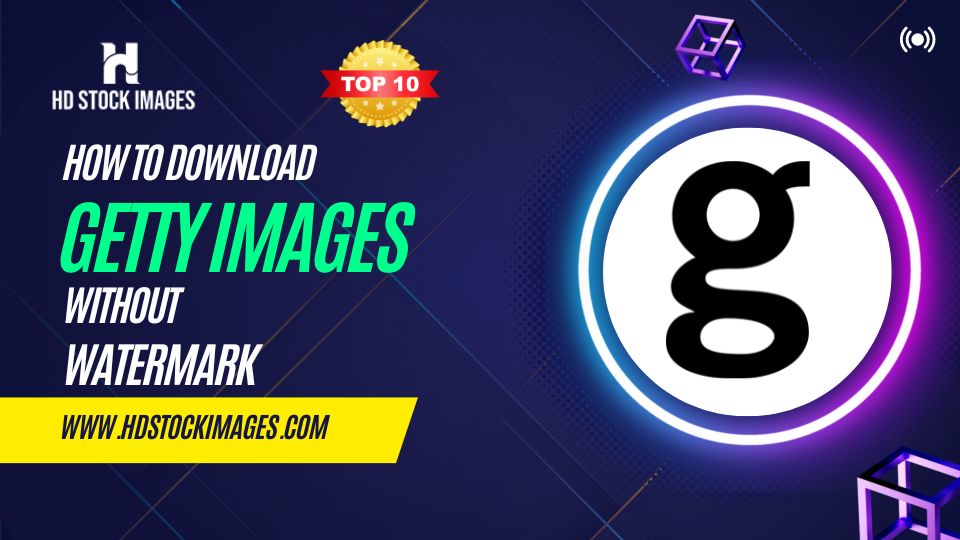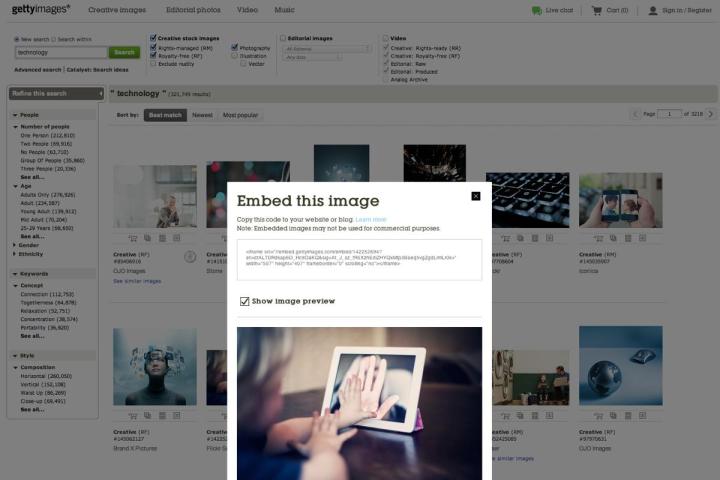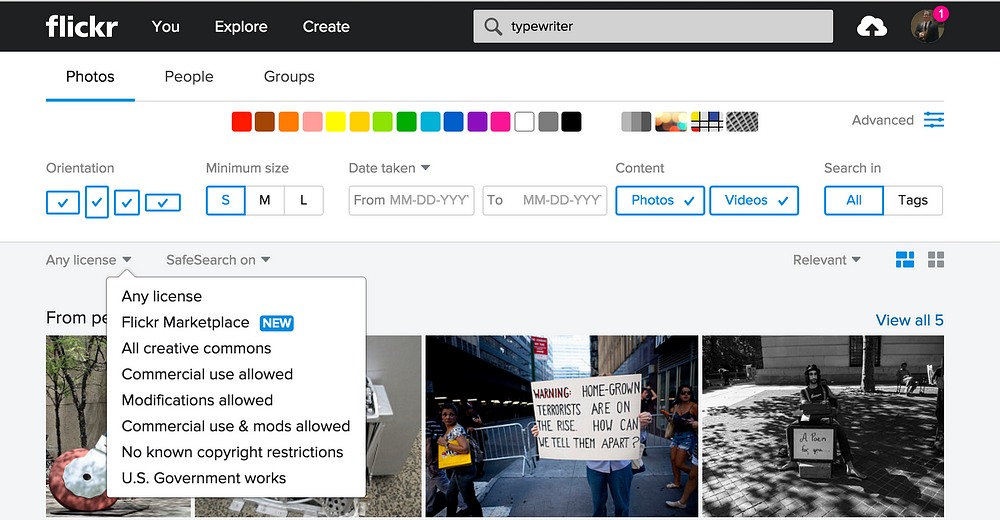If you've ever searched for high-quality images, chances are you've stumbled upon Getty Images. This platform is a treasure trove of professional photographs, illustrations, and videos, perfect for various projects. However, it’s crucial to understand that these images are protected by copyright law. Downloading or using them without permission can lead to legal headaches. In this post, we'll explore how to navigate the world of Getty Images while respecting copyright laws, ensuring you can enjoy their stunning visuals without any worries.
Understanding Copyright Laws Related to Images

Copyright laws are designed to protect the creators of original works, including photographs, artwork, and written content. When it comes to images, copyright grants the creator exclusive rights to reproduce, distribute, and display their work. Here are some key points to help you understand these laws better:
- Ownership: The photographer or creator typically holds the copyright to their images. Even if you find an image online, it doesn't mean it's free to use.
- Originality: Copyright protects original expressions of ideas. So, if an image is unique and created by someone, it likely has copyright protection.
- Duration: Copyright lasts for the creator's lifetime plus a certain number of years (usually 70 in many countries). After that, the work enters the public domain.
- Usage Rights: Just because you can see an image online doesn’t mean you have the right to use it. Always check the licensing terms.
Knowing how copyright works is essential, especially if you’re considering using Getty Images. Here are a few common copyright scenarios:
| Scenario | Action | Explanation |
|---|---|---|
| Using images for personal projects | Seek permission or purchase licenses | Even for personal use, licensing is crucial to avoid infringement. |
| Sharing images on social media | Check platform policies and image licensing | Some licenses allow sharing, while others don’t. Always verify. |
| Creating derivative works | Obtain permission | Modifying an image still requires the original creator's consent. |
In summary, understanding the basics of copyright laws related to images is essential for anyone working with visuals. By respecting the rights of creators and obtaining the necessary permissions, you can enjoy using Getty Images without fear of legal repercussions. Next, we’ll delve deeper into how you can responsibly use these images for your personal projects. Stay tuned!
Also Read This: Getty Images vs Getty Images: Comparing Two Leading Stock Photography Platforms
3. Permitted Use Cases for Getty Images

When it comes to using Getty Images, understanding the permitted use cases is crucial to ensure you’re on the right side of copyright laws. While Getty Images provides a vast library of stunning visuals, they come with specific guidelines for their use. Here are some scenarios where you can legally use their images:
- Editorial Use: This includes news articles, blogs, and magazines. For example, if you’re writing a piece about a recent event, you can use Getty Images to illustrate your article, provided you follow their licensing agreements.
- Personal Projects: If you’re creating a personal blog or social media post that isn’t for commercial purposes, you might be able to use Getty Images under certain conditions. Just remember, if you’re monetizing your blog, you’ll need a proper license.
- Non-Profit and Educational Purposes: Many non-profits use images for fundraising campaigns or educational content. However, it’s essential to check Getty's licensing terms to confirm that your intended use falls under their allowances.
It’s vital to note that while these use cases can allow for legal usage, they still require adherence to Getty’s licensing agreements. Always double-check the terms associated with the specific image you’re interested in. Ignoring these could lead you into murky legal waters, which is the last thing anyone wants!
Also Read This: Adobe Stock vs. Alamy: Choosing the Right Platform for Selling Photos
4. Methods to Legally Use Getty Images

Now that you know about the permitted use cases, let’s dive into the methods to legally use Getty Images. Here are some straightforward ways to access and incorporate Getty Images without stepping on copyright toes:
- Purchase a License: This is the most straightforward method. Getty Images offers various licensing options catering to different needs. Whether you need a single image or a subscription for multiple images, there's a pricing tier that fits your budget. Purchasing a license gives you the freedom to use the image as outlined in the agreement.
- Use Free Trials: Getty occasionally offers free trials for certain content. This can be a great way to explore their library without immediate financial commitment. Just make sure to read the terms to understand how long you can use the images and for what purposes.
- Explore Creative Commons Licenses: While Getty Images primarily operates under strict copyright, you may find some images available under Creative Commons. These allow for a range of uses, often even for commercial purposes, as long as you credit the creator properly. However, this isn’t the main focus of Getty, so keep an eye out for specific images that might fall under this category.
- Consider Alternatives: If the licensing fees are too high, check out alternatives like Unsplash, Pexels, or Pixabay. These platforms offer high-quality images for free, often under much more flexible licensing agreements. While they might not have the same exclusive or high-profile images as Getty, they can be great for personal projects!
In essence, while Getty Images is a fantastic resource for captivating visuals, using them legally requires a clear understanding of licensing options. By purchasing licenses or exploring free alternatives, you can enhance your projects without the fear of copyright infringement. So, get creative and use those stunning images wisely!
Also Read This: How to Sell My Photos on Getty Images: Tips and Strategies for Success
5. Alternatives to Getty Images for Personal Use
If you're on the hunt for stunning visuals but want to steer clear of Getty Images, you're in luck! There are several fantastic alternatives out there that offer high-quality images for personal use, often for free or at a lower cost. Here are some options to consider:
- Unsplash: This platform provides a vast library of free high-resolution photos contributed by talented photographers around the globe. The best part? All images are free to use, even for commercial purposes, without worrying about copyright issues.
- Pexels: Similar to Unsplash, Pexels offers a wide array of free stock photos and videos. Their user-friendly search function makes it easy to find exactly what you're looking for, whether it's a serene landscape or an urban scene.
- Pixabay: With over 1.7 million free images, illustrations, and videos, Pixabay is another excellent resource. Like the others, it's free to use for personal and commercial projects, making it a great alternative to Getty.
- Adobe Stock: If you're looking for premium images, Adobe Stock might be the way to go. While it’s a paid service, they offer high-quality images and a free trial that you can take advantage of to explore their offerings.
- Shutterstock (with caution): While this site is similar to Getty in pricing, it does offer a wider range of subscription plans. If you're willing to invest a little, you can access millions of images and use them legally without copyright concerns.
These platforms provide excellent resources for your personal projects, ensuring you have access to beautiful images without stepping on copyright toes. Just remember to check each site's licensing agreements to ensure you're compliant with their terms.
6. Best Practices for Respecting Copyright and Avoiding Violations
Navigating the world of copyright can feel daunting, especially when it comes to using images. However, following a few best practices can make it easier and help you avoid any legal troubles. Here are some key tips to keep in mind:
- Understand Copyright Basics: Copyright laws vary by country, but the basic principle is that the creator of an image holds the rights to that work. Always assume that you need permission to use an image unless it’s explicitly marked as free to use.
- Read Licensing Agreements: Before using any image, make sure to read its licensing terms. Some images may allow personal use but prohibit commercial use, while others may require attribution. Clarifying these terms helps you stay compliant.
- Give Credit Where It’s Due: If you’re using images that require attribution, don’t forget to credit the original creator. This not only respects their work but also builds your credibility as a content creator.
- Keep a Record: Whenever you download a photo, keep a record of where it came from and its licensing details. This can be helpful if you ever need to verify your usage rights.
- Choose Royalty-Free or Creative Commons Images: Opting for images that fall under these categories can significantly reduce the risk of copyright infringement. Just be sure to check the specific requirements for each image.
By incorporating these best practices into your image usage routine, you'll not only protect yourself from potential legal issues but also foster a culture of respect for creators and their work. Happy creating!
 admin
admin








